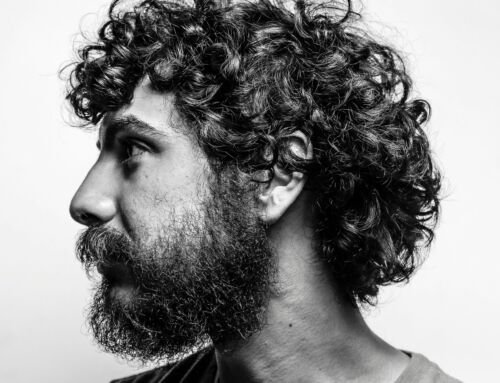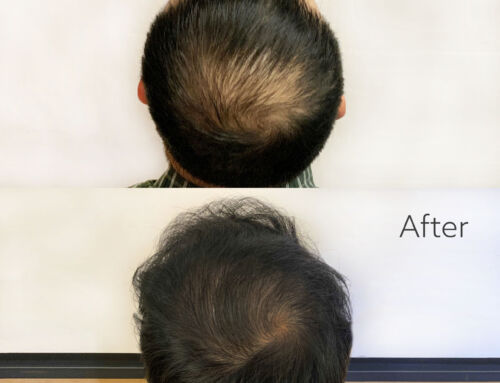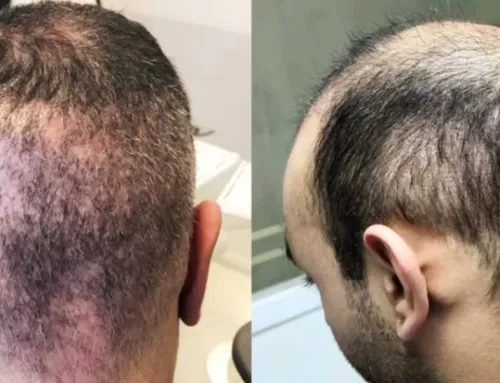Are your eyes giving your age away? Or even worse – making you look older than you actually are? Without a doubt, the area around your eyes is one of the very first areas of your face to succumb to aging. Studies have shown that upon meeting someone, people look first at a person’s eyes … then nose and mouth. Having dark circles, bags or wrinkles is not the first impression you want to give.
The subcutaneous fat (beneath the epidermis and dermis) serves as a type of cushion and support to these upper layers. The skin around the eye is very thin and delicate, containing very little of this subcutaneous fat. This fragile skin becomes even thinner as we age and hence more vulnerable to signs of aging. These changes commonly arrive as unwelcome dark circles, puffiness, fine lines and wrinkles. Let’s take a look at some aging changes around the eyes and how we can reverse or prevent them, keeping your eyes youthful, clear and vibrant.
Eyes: Dark Circles
Causes : Genetics / Poor Sleep / Allergies / Eye Irritation / UV Rays
Genetics can play a role in literally any aging seen around the eyes. Dark circles are no exception. People with very fair skin tend to have even thinner than average skin around their eyes. When blood in tiny capillaries pools in this area under the eye it is much more noticeable in those with fair skin. When these capillaries are dilated it gives off a bluish hue. With poor sleep or stress, the problem is exacerbated. Fatigue causes the blood flow to become even more sluggish.
Seasonal allergies (and other allergies including food allergies) and chronic eye irritation cause the body to release a substance called histamine. Although the body is releasing histamine in an attempt to protect itself, around the eyes it simply causes further swelling of the blood vessels and even darker circles. People with chronic eye irritation from allergies or contact lenses make matters worse by rubbing that thin, delicate skin around the eye. UV rays contribute to the problem through an increase in the presence of free radicals and melanin secretion. This makes the circles even darker.
Dark Circle Treatments:
Wear sunglasses – A great way to block those UV rays.
Sunblock – In terms of sunblock around the eye, it should contain zinc or titanium oxide which will fully block the UV rays. These ingredients are also less likely to cause eye irritation.
Use a moisturizer with a humectant (like hyaluronic acid or glycerin) which will attract moisture to the area, plumping it up slightly so the capillaries are less visible.
Take an anti-histamine medication. Speak with your doctor first, but note that Claritin is over the counter and is probably one of the ‘cleanest’ medications out there in terms of good results with rare side effects. I have recommended it for years.
Use creams with brightening agents. My favorites include Niacinamide (vitamin B3), Vitamin C, Vitamin C-Ester and Hydroxyquinone. These have been shown to fade excess melanin in the tissues.
Have a medical aesthetic treatment. Dermal fillers to the tear tough area (under the eye) with fillers like Belotero or Restylane can be very helpful as can LED treatments. In terms of cosmetic lasers, the use of a Q-Switched 1,064nm laser has been shown to be effective in the treatment of these dark circles.

Causes: Genetics, Diet (salt), Allergies, Alcohol, UV Rays
Some individuals have puffy eyes based on their genetics. They have larger fat pads around the eyes which can become more visible as they age. The skin around the eye is thin and delicate and is quick to show excess fluid in the body (i.e. puffiness). Alcohol consumption and salty food are two main culprits causing fluid retention and puffy eyes. Stress and/or lack of sleep make matters worse.
Allergies and eye irritation can also exacerbate eye puffiness due to histamine release. UV rays cause more free radicals which can make eyes even more puffy and irritated. In some cases hormonal changes seen with menopause or hypothyroidism may be the cause.
In some fortunate people, gravity itself will help the puffiness resolve once their head is elevated in the morning. This is not always the case.
Puffy or Baggy Eye Treatments/Preventions
Diet: Avoiding alcohol and salty food is a start. Dietary choices can help even more. Foods that are high in anti-oxidants/anti-inflammatory ingredients like green leafy vegetables and vitamin A and C-rich fruits can be very beneficial as can seafood high in omega 3 fatty acids such as salmon and tuna.
Allergies or Contact Lens Irritation: As noted above, in some people these allergies/irritations can cause dark circles. In others, the release of histamine results in swelling around the eye. Over the counter histamines can be very helpful in this regard, as can anti-histamine eye drops. Make sure you are following the optometrist’s recommendation regarding cleaning and storing your contact lenses.
Sleep with your head elevated: Gravity is not the friend of those with puffy eyes. Some find sleeping on their back on two pillows to be helpful. Provided you can sleep comfortably in this position, it may be worth a try.
Hypothyroidism or Hormonal Changes: There indeed are more serious medical conditions with ‘puffy eyes’ showing up as a first symptom. It warrants investigation if your eyes have become puffy and remain so despite dietary changes. See your doctor. A simple blood test can determine if there are hormonal issues behind those puffy eyes.
Wash your makeup off before bed. Makeup around your eyes can cause eye irritation resulting in excessive puffiness in the morning.
Eye creams and serums: The use of creams and serums twice a day may be very helpful indeed. Choose one with ingredients such as aloe, vitamin E, and retinol.
Cool your eyes down: We are all familiar with the cucumber slice over the eye for eye swelling. Whether it’s a cucumber, tea bag or cold spoon, it is the cold that is helping the puffiness, not anything else. I am not a fan of tea bags or cucumbers due to potential infection. If you want to cool your eyes down, I prefer reusable gel eye masks that can be chilled and disinfected between uses.
Wear sunglasses and/or sunblock around the eye. Sunblock should contain zinc or titanium oxide which will fully block the UV rays.
Surgical Options: If 1-8 above are not effective (which commonly is the case in those who have genetically large fat pads) speak to a cosmetic surgeon about blepharoplasty. This is a way to surgically correct droopy eyelids or bags under the eyes.

Causes: UV Rays, Genetics, Eye Strain
Every time you smile, laugh, squint, frown or yawn the small muscles around your eyes contract. In doing so, they are repeatedly scrunching the skin and collagen between them. Over the years, fine lines form and later become deep wrinkles. These creases fan out from the corner of your eye, hence the well-known title “crow’s feet.” Normal movement of the muscles around our eyes can be exacerbated by eye strain/squinting. UV rays and the free radicals they form make matters worse.
Fine Line and Wrinkle Treatment:
Block UV rays in the form of sunglasses or sunblock containing zinc or titanium oxide. I prefer SPF of 30+. Many people are very judicious about putting sunblock on their face and neck but miss the area around their eyes. Don’t skip it.
Anti-oxidants – The use of alpha and beta hydoxy acids help remove dead skin cells and stimulate the growth of the supporting structures of collagen and elastin. Vitamin A (retinol) creams work similarly while speeding up cell turnover bringing fresher cells more quickly to the surface. Don’t forget antioxidants in the diet in the form of green leafy vegetables, vitamin A and C-rich fruits and omega 3 fatty acid rich seafood.
Medical Aesthetic Treatments: Botox Cosmetic has been the gold standard for treatment of crow’s feet for 15 years. Through reversibly blocking nerve impulses the muscles around the eye do not contract and the area smoothens. Dysport and Xeomin work similarly. Other options include the injection of dermal fillers. For fine areas such as these. , the use of Belotero and Restylane has been successful. Other treatments such as microdermabrasion, chemical peels and microneedling can also improve the appearance of fine lines and wrinkles around the eye. Talk to your doctor or aesthetician about which medical aesthetic treatment may be best for you.
Author: Dr. Dean Tomacello
Resource: https://www.clearskinmd.net






